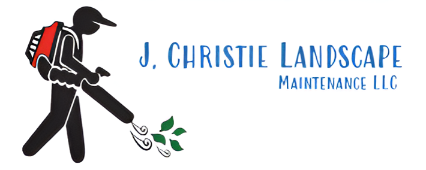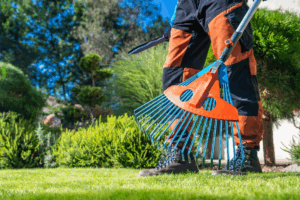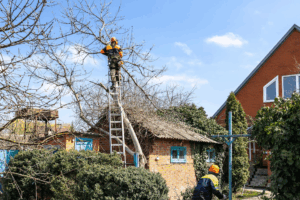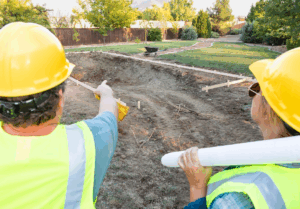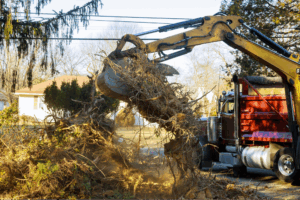Tree trimming is an essential part of property maintenance. Overgrown branches can cause damage, create safety hazards, and make trees more prone to disease. Regular trimming keeps trees healthy and improves curb appeal. However, many homeowners hesitate because they don’t know the costs involved. Understanding what affects tree trimming prices helps in making informed decisions.
Cost to Trim a Tree: Price Ranges and Key Factors
Tree trimming costs vary based on several factors. On average, homeowners spend between $150 and $1,500 per tree, depending on size and complexity. Most routine trims fall in the $450 to $750 range. Larger trees, emergency services, and challenging locations increase the price. Knowing the cost breakdown makes it easier to plan and budget accordingly.
Factors That Affect Tree Trimming Costs
Several elements influence the final price of tree trimming. The height and type of tree determine how much labor and equipment are needed. Diseased or damaged trees require extra care, increasing costs. Accessibility also matters—trees near buildings or power lines need specialized handling. Seasonal demand plays a role, with peak times often driving prices higher.
Average Costs by Tree Size
Tree size is a significant factor in pricing. Trimming small trees under 30 feet usually costs $150 to $400. Medium-sized trees between 30 and 60 feet range from $450 to $750. Large trees over 60 feet can cost between $800 and $1,500. Extra-large trees exceeding 80 feet often require cranes, making the job even more expensive. Taller trees demand more skill and safety precautions, leading to higher costs.
Cost Breakdown by Service Type
Different tree trimming services come with varying price tags. Basic maintenance trims are the most affordable, focusing on minor shaping and removing small branches. Complete pruning, which enhances tree health and structure, costs more due to the extra labor. Deadwood removal and large limb trimming also increase costs. Emergency services, often needed after storms, can double or triple standard rates. Debris removal and stump grinding may add to the final bill.
Cost to Trim a Tree: Price Differences by Location
Tree trimming costs vary based on where you live. Urban areas typically have higher prices due to increased labor costs and stricter regulations. Rural locations often offer lower rates, but travel fees may apply if the service provider is far away. Climate and local tree species also impact pricing, as some trees require specialized trimming. Understanding these regional factors helps homeowners estimate costs more accurately:
Urban vs. Rural Cost Differences
City-based tree services charge more due to higher wages, insurance, and permit fees. The average cost in urban areas ranges from $300 to $1,500, depending on the tree size. In rural regions, prices are generally lower, averaging between $150 and $1,000. However, fewer tree service companies in remote areas can lead to higher travel fees. Factoring in local availability ensures a more realistic cost estimate.
Regional Variations in Pricing
Due to weather conditions and tree types, certain regions have higher tree-trimming costs. Professionals often charge more in storm-prone areas due to increased demand for emergency trimming. Some states also have regulations that require licensed arborists, increasing labor costs. Coastal regions with salt exposure may need specialized pruning, adding to the expense. Checking local service rates gives a clearer idea of what to expect.
How Local Regulations Affect Costs
Some cities require permits for trimming protected trees, which adds to the total cost. Homeowners associations (HOAs) may also have specific rules that influence pricing. Fines for improper trimming can increase overall expenses. Certified arborists handle these legal requirements, but their services come at a premium. Knowing the regulations in your area helps prevent unexpected costs.

One-Time vs. Regular Maintenance Costs to Trim a Tree
Homeowners often face the choice between routine trimming and waiting until problems arise. While a one-time trim may seem cost-effective, neglecting regular maintenance increases expenses. Preventative care reduces the risk of hazardous limbs and expensive emergency services. Routine trimming also promotes healthier tree growth, avoiding costly removals. Comparing these costs helps homeowners make the best long-term decision:
How Regular Trimming Saves Money
Scheduled trimming prevents excessive branch growth, reducing labor and equipment costs. Regular maintenance trims typically range from $100 to $500 per visit, depending on the tree size. Overgrown trees that require corrective trimming cost significantly more. Trimming every one to three years helps avoid major interventions and keeps trees in good condition. Investing in maintenance prevents significant one-time expenses in the future.
One-Time Trimming vs. Emergency Costs
One-time trimming costs more when trees are overgrown or damaged. If left unattended, trees may develop weak branches, leading to emergency removals. Emergency services cost between $1,000 and $3,000, far exceeding routine trimming fees. Storm-damaged trees require urgent attention, which often results in higher labor rates. Keeping up with maintenance reduces the risk of sudden, costly tree work.
Long-Term Benefits of Preventative Care
Regular pruning enhances tree health and structure, preventing breakage and disease. Well-maintained trees increase property value and curb appeal. Routine care also minimizes liability risks from falling branches. Homeowners who invest in maintenance spend less time than those who wait for serious issues. Taking proactive steps now prevents unexpected costs later.
DIY Costs vs. Hiring a Professional to Trim a Tree
Choosing between professional and DIY trimming depends on the job’s complexity. Professionals have the tools and experience to handle trees of all sizes safely. DIY trimming can save money but comes with risks, especially for large trees. Mistakes can lead to property damage, injuries, or unhealthy trees. Knowing when to call a pro prevents costly problems.
Professional Tree Trimming Ensures Safety and Quality
Certified arborists know how to trim trees properly. They use specialized tools, follow safety guidelines, and understand tree health. Large trees or those near power lines require expert handling. Professionals also carry insurance, reducing liability risks. Hiring an experienced tree service ensures the job is done correctly and safely.
DIY Trimming Can Be Risky and Time-Consuming
Trimming trees yourself might seem cost-effective, but it has drawbacks. Climbing trees and using power tools without training is dangerous. Incorrect cuts can weaken branches, causing future issues. DIY work also takes more time, especially without proper equipment. Hiring a pro is usually the safer choice for anything beyond minor trimming.
Knowing When to Call an Arborist
Certain situations require expert help. Professionals should always handle large trees, diseased branches, or trees near power lines. Arborists assess tree health and recommend the correct type of trimming. Some cities require permits for trimming protected trees, which pros can help navigate. Calling an arborist ensures the job is done legally and correctly.

Hidden Fees That Increase the Cost to Trim a Tree
Tree-trimming quotes don’t always include everything. Additional fees can add up, making the job more expensive than expected. Factors like cleanup, accessibility, and emergency services affect the final price. Understanding these hidden costs helps avoid surprises:
Cleanup and Debris Removal Fees
Some tree services charge extra for cleanup. Removing branches, leaves, and wood chips adds labor costs. Stump grinding is often a separate service with its fee. Always ask if debris removal is included in the quote. Knowing the cleanup cost upfront prevents unexpected charges.
Accessibility and Location Challenges
Difficult-to-reach trees cost more to trim. Trimming a tree close to a building, fence, or power lines requires more time and care. Limited access may require specialized equipment, increasing labor costs. Urban areas often have higher prices due to space constraints. Factoring in location challenges helps estimate the actual cost.
Permit and Regulation Fees
Some cities require permits for tree trimming. Protected or historic trees may have strict regulations, and failing to obtain a permit can result in fines. Professional arborists usually handle the paperwork, which may cost additional. Checking local rules avoids legal issues and unexpected fees.
Trimming After Storms Costs More
Urgent tree trimming after storms or accidents is expensive. Emergency services often charge double or triple standard rates. Weekend and holiday work also increases costs. Planning regular maintenance reduces the need for last-minute, high-priced services. Preparing for emergencies prevents financial strain.
Impact of Tree Species to Cost to Trim a Tree
The type of tree trimmed affects the overall cost. Some species require more labor-intensive trimming due to their growth patterns or wood density. Hardwood trees generally cost more to trim than softwoods because they are denser and more challenging to cut. Fast-growing trees often need frequent pruning, increasing long-term maintenance costs. Understanding how tree species impact pricing helps homeowners plan for future trimming expenses.
Hardwood vs. Softwood Trimming Costs
Hardwood trees, such as oak, maple, and hickory, are more difficult to cut. Their branches are thicker and require specialized equipment, increasing labor costs. Softwood trees, like pine and fir, are easier to trim and usually cost less. Depending on the size, cutting a hardwood tree can cost 20–30% more than a softwood tree of the same height. Choosing trees that require less frequent trimming can save money over time.
Fast-Growing Trees Require More Frequent Trimming
Species that grow quickly, such as willows and poplars, need more regular maintenance. These trees produce long, heavy branches that can break or interfere with structures. Trimming them every one to two years helps prevent structural damage and safety hazards. The more frequently a tree needs trimming, the higher the cumulative cost. Homeowners should consider maintenance needs before planting fast-growing trees.
Exotic and Protected Trees May Have Higher Costs
Some tree species are considered protected or rare, requiring special care. Palm trees, for example, need skilled trimming to avoid damage to the trunk. Fruit trees require careful pruning to ensure continued growth and production. In some areas, native or historic trees may be subject to local regulations, increasing costs. Checking with local authorities helps homeowners avoid fines or unnecessary expenses.
Make the Cost to Trim a Tree Worth Every Penny
A well-maintained tree isn’t just about aesthetics—it’s a safeguard for your home, a boost to your property value, and a step toward a safer outdoor space. Ignoring overgrown branches now could lead to costly emergencies later. The right investment in tree trimming today prevents damage, reduces long-term expenses, and keeps your landscape thriving. Whether routine maintenance or a much-needed trim, taking action ensures your trees remain an asset, not a liability. Don’t wait for a fallen limb to decide—schedule your tree care and confidently protect your property.
Stay informed about tree care and maintenance—read more on the J. Christie Landscape blog.
